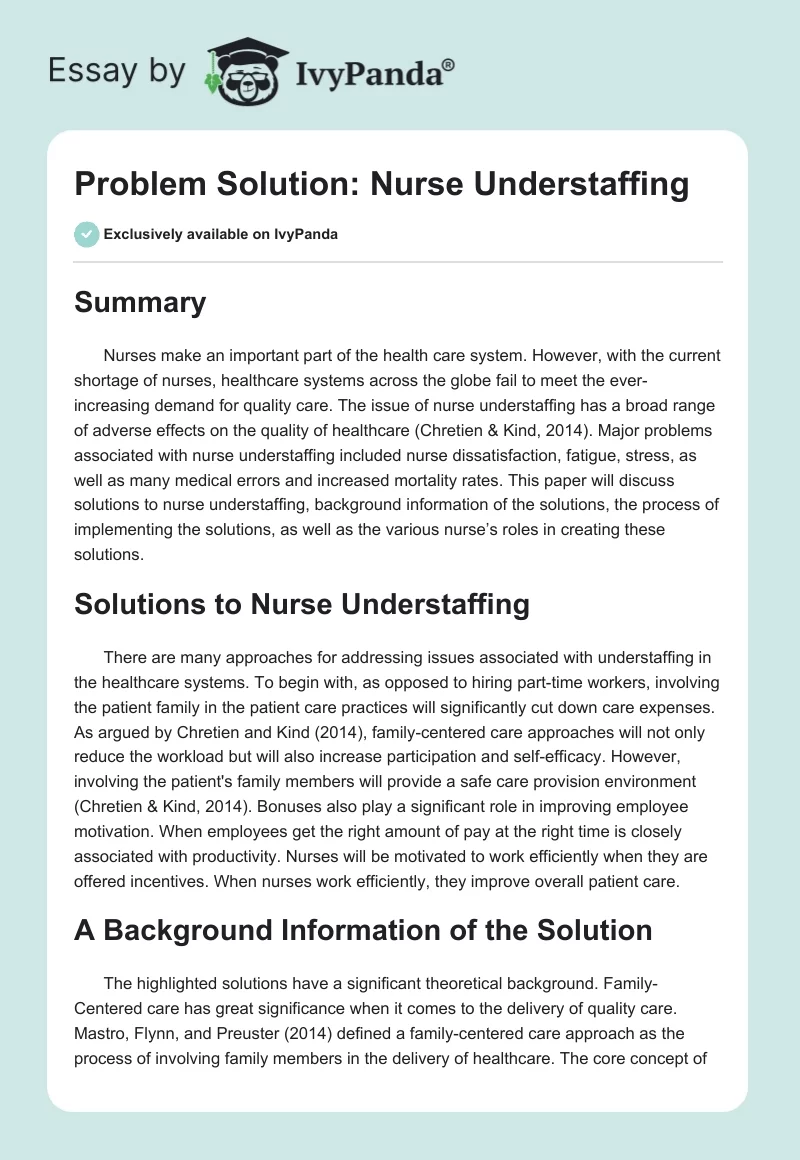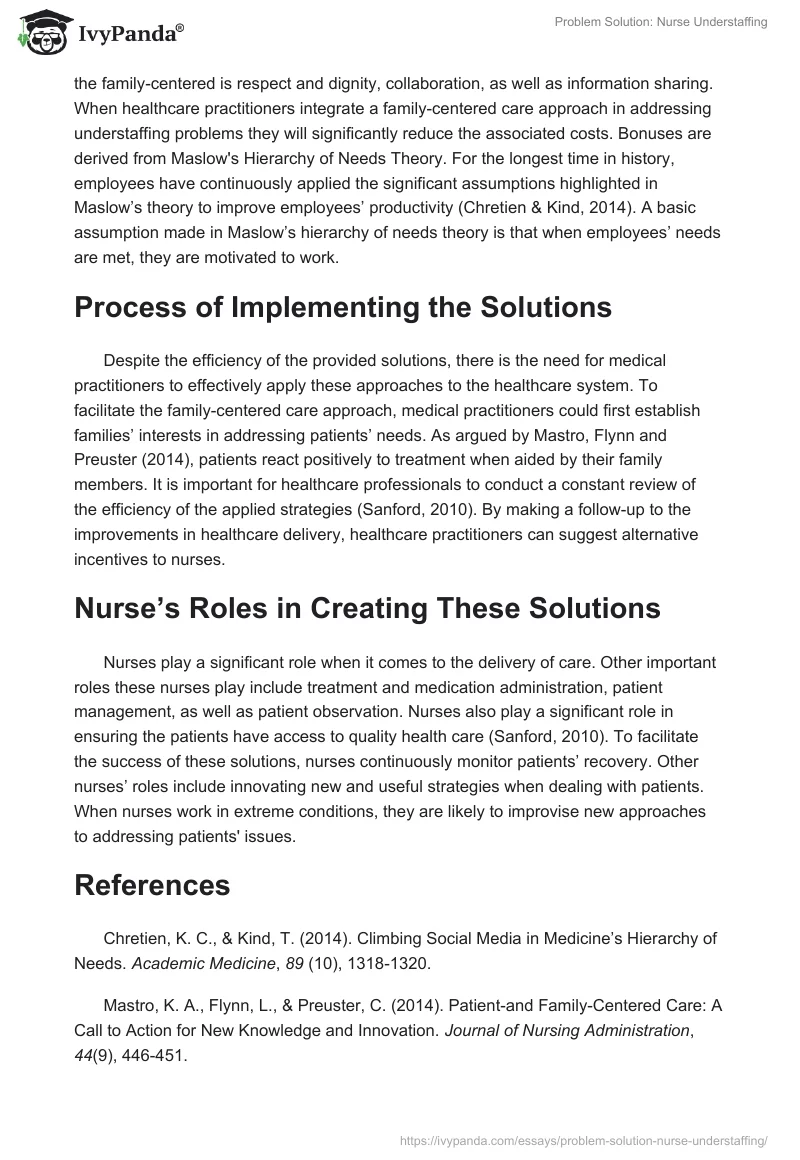Summary
Nurses make an important part of the health care system. However, with the current shortage of nurses, healthcare systems across the globe fail to meet the ever-increasing demand for quality care. The issue of nurse understaffing has a broad range of adverse effects on the quality of healthcare (Chretien & Kind, 2014). Major problems associated with nurse understaffing included nurse dissatisfaction, fatigue, stress, as well as many medical errors and increased mortality rates. This paper will discuss solutions to nurse understaffing, background information of the solutions, the process of implementing the solutions, as well as the various nurse’s roles in creating these solutions.
Solutions to Nurse Understaffing
There are many approaches for addressing issues associated with understaffing in the healthcare systems. To begin with, as opposed to hiring part-time workers, involving the patient family in the patient care practices will significantly cut down care expenses. As argued by Chretien and Kind (2014), family-centered care approaches will not only reduce the workload but will also increase participation and self-efficacy. However, involving the patient’s family members will provide a safe care provision environment (Chretien & Kind, 2014). Bonuses also play a significant role in improving employee motivation. When employees get the right amount of pay at the right time is closely associated with productivity. Nurses will be motivated to work efficiently when they are offered incentives. When nurses work efficiently, they improve overall patient care.
A Background Information of the Solution
The highlighted solutions have a significant theoretical background. Family-Centered care has great significance when it comes to the delivery of quality care. Mastro, Flynn, and Preuster (2014) defined a family-centered care approach as the process of involving family members in the delivery of healthcare. The core concept of the family-centered is respect and dignity, collaboration, as well as information sharing. When healthcare practitioners integrate a family-centered care approach in addressing understaffing problems they will significantly reduce the associated costs. Bonuses are derived from Maslow’s Hierarchy of Needs Theory. For the longest time in history, employees have continuously applied the significant assumptions highlighted in Maslow’s theory to improve employees’ productivity (Chretien & Kind, 2014). A basic assumption made in Maslow’s hierarchy of needs theory is that when employees’ needs are met, they are motivated to work.
Process of Implementing the Solutions
Despite the efficiency of the provided solutions, there is the need for medical practitioners to effectively apply these approaches to the healthcare system. To facilitate the family-centered care approach, medical practitioners could first establish families’ interests in addressing patients’ needs. As argued by Mastro, Flynn and Preuster (2014), patients react positively to treatment when aided by their family members. It is important for healthcare professionals to conduct a constant review of the efficiency of the applied strategies (Sanford, 2010). By making a follow-up to the improvements in healthcare delivery, healthcare practitioners can suggest alternative incentives to nurses.
Nurse’s Roles in Creating These Solutions
Nurses play a significant role when it comes to the delivery of care. Other important roles these nurses play include treatment and medication administration, patient management, as well as patient observation. Nurses also play a significant role in ensuring the patients have access to quality health care (Sanford, 2010). To facilitate the success of these solutions, nurses continuously monitor patients’ recovery. Other nurses’ roles include innovating new and useful strategies when dealing with patients. When nurses work in extreme conditions, they are likely to improvise new approaches to addressing patients’ issues.
References
Chretien, K. C., & Kind, T. (2014). Climbing Social Media in Medicine’s Hierarchy of Needs. Academic Medicine, 89 (10), 1318-1320.
Mastro, K. A., Flynn, L., & Preuster, C. (2014). Patient-and Family-Centered Care: A Call to Action for New Knowledge and Innovation. Journal of Nursing Administration, 44(9), 446-451.
Sanford, K.D. (2010). Nurse staffing: Finding the right number and mix. Healthcare Financial Management, 64 (9), 38-39.


